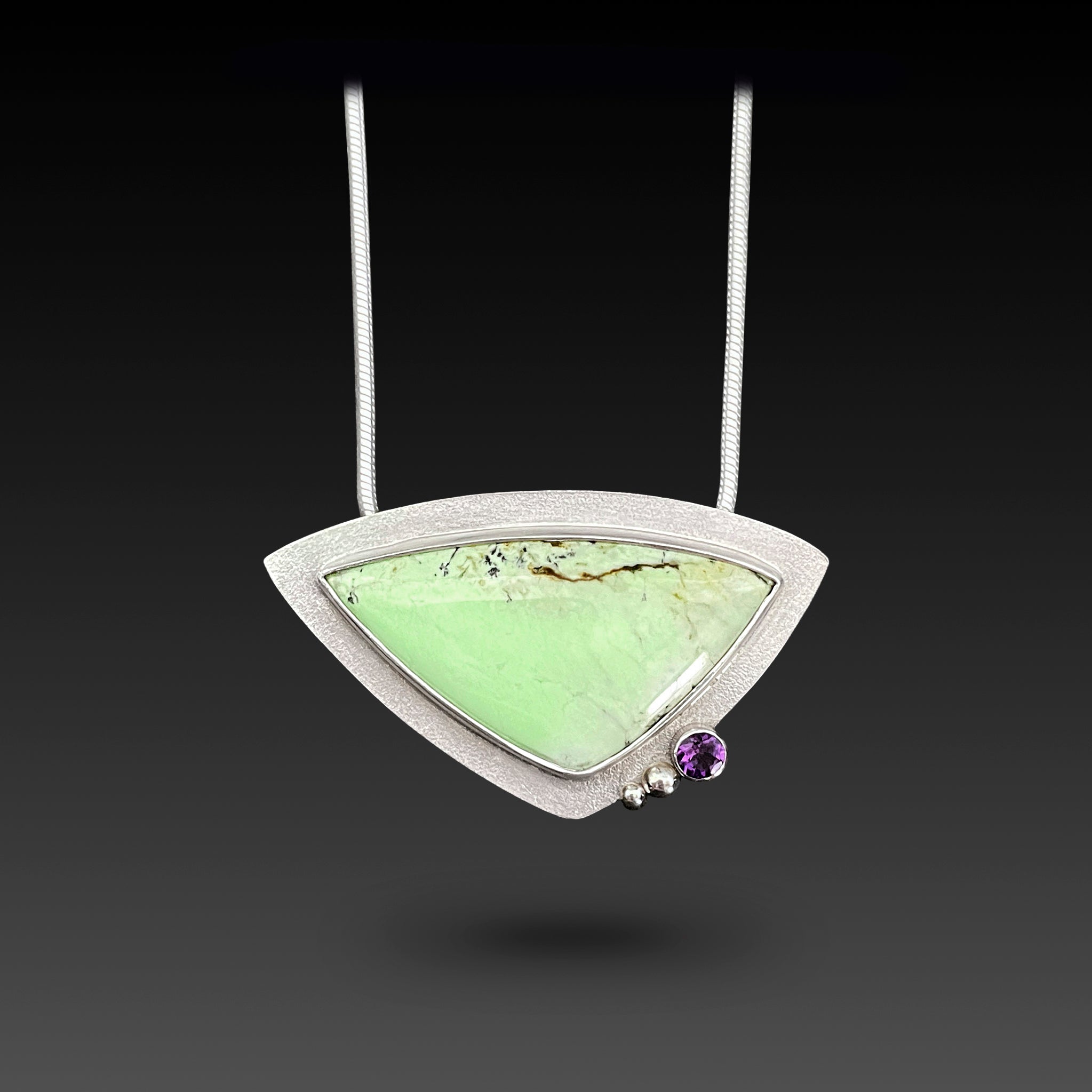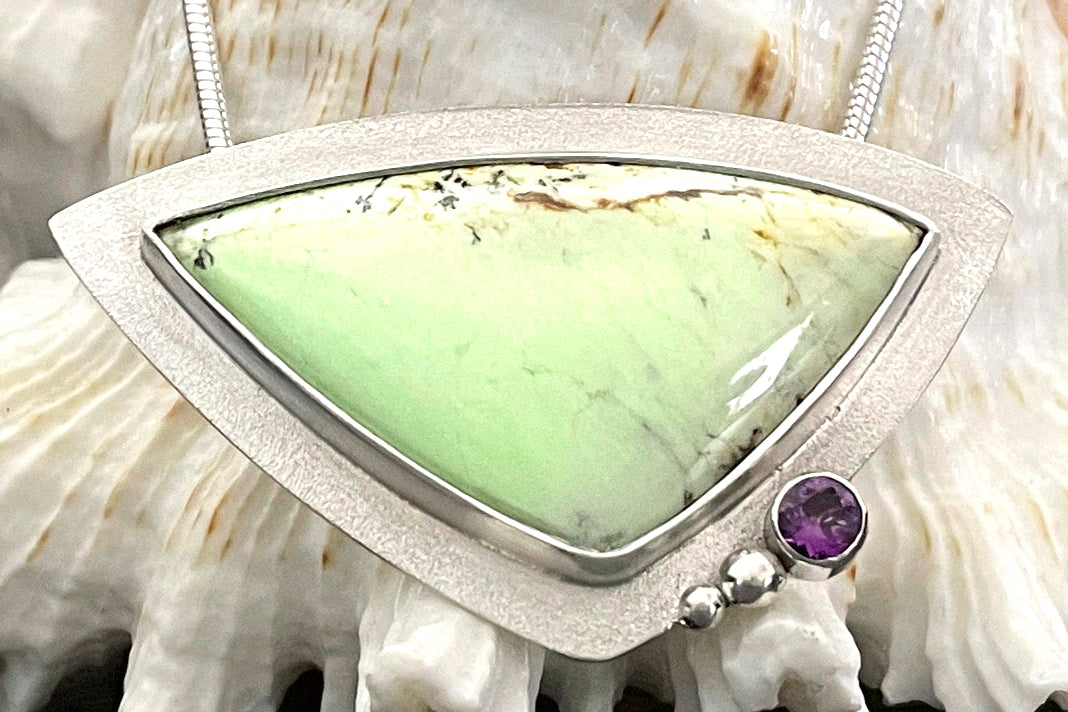This timeless piece of mid-century styled jewelry is a luxurious blend of Lemon Chrysoprase and Amethyst set in sterling and fine silver. Its retro sail shapes, texture and tactile nature evoke an elegant, classic and exclusive style, making it perfect for those seeking a sophisticated and tasteful statement.
Details:
- Lemon Chrysoprase
- 4mm Genuine Amethyst
- Sterling and fine silver.
- Hidden bail on back.
- 1-7/8” wide by 1-1/8” long.
- Includes an 18" or 20" snake chain.
Gemstone information:
Citron or Lemon Chrysoprase is a material with a "chrysoprase" name. It is an attractive, milky green rock composed mainly of magnesite, a magnesium carbonate mineral. It forms where serpentine is weathered or altered by hydrothermal activity. This opaque material is usually called "citron chrysoprase" or "lemon chrysoprase" because of its citrus color. A better name for this material would be "lemon magnesite" or "citron magnesite." The "chrysoprase" name has been used for this material worldwide for a few decades.
Found at numerous locations in Australia, this beautiful magnesite is found among the same rocks as chrysoprase. It also occurs as nodules in the soils above where those rocks are weathering. In fact, lemon magnesite and chrysoprase often occur in the same fractures and nodules. Nodules can have a chrysoprase core overgrown by magnesite, or a magnesite core overgrown by chrysoprase. The nodules range from millimeters to meters across.
Amethyst is the purple variety of the quartz mineral species. Amethyst’s purple color can range from a light lilac to a deep, intense royal purple, and from brownish to vivid. Amethyst also commonly shows what is called color zoning, which in the case of amethyst usually consists of angular zones of darker to lighter color.
Amethyst was prized by ancient civilizations and was closely associated with spirituality, faith, and wisdom. The color purple has long been associated with royalty and the aristocracy. It is the birthstone for February.











